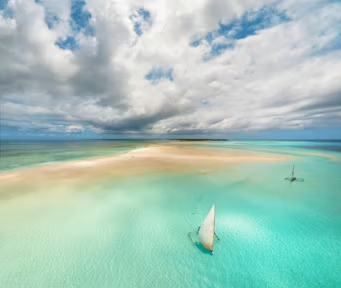Your cart is currently empty!
Is It Worth Visiting Mount Kilimanjaro After a Safari?
FacebookXIs It Worth Visiting Mount Kilimanjaro After a Safari? If you’re planning a trip to Tanzania, one question that may be on your mind is whether or not it’s worth visiting Mount Kilimanjaro after going on a safari. Many travelers wonder if it’s possible to enjoy both the incredible wildlife safari experience and the thrill…

Is It Worth Visiting Mount Kilimanjaro After a Safari?
If you’re planning a trip to Tanzania, one question that may be on your mind is whether or not it’s worth visiting Mount Kilimanjaro after going on a safari. Many travelers wonder if it’s possible to enjoy both the incredible wildlife safari experience and the thrill of climbing one of the world’s most famous mountains. In this blog post, we’ll explore why combining a Mount Kilimanjaro adventure with a safari can be an unforgettable experience. We’ll also help you understand what makes each part of your trip so special and how they can complement each other perfectly.
What Is Mount Kilimanjaro?
Mount Kilimanjaro is the highest mountain in Africa and one of the tallest free-standing mountains in the world. It’s located in Tanzania, and it’s a popular destination for people who love adventure and nature. The mountain stands 5,895 meters (19,341 feet) above sea level, so it’s a big challenge to climb, but the view from the top is something you’ll never forget.
The journey to the summit of Mount Kilimanjaro is known for its beautiful landscapes, changing climates, and the incredible feeling of achievement when you reach the peak. There are several routes that climbers can take, and each one offers different experiences.
What Is a Safari?
A safari is an exciting adventure where you go into the wild to see animals in their natural habitats. In Tanzania, safaris are a big deal because the country is home to some of the most amazing wildlife in the world. You can see elephants, lions, giraffes, zebras, and many more animals. The safaris take place in national parks like Serengeti, Ngorongoro Crater, and Tarangire, where the animals roam freely.
A safari is usually done in a special vehicle that helps you get close to the animals safely. It’s an amazing way to experience nature and witness how wild animals behave in their environment.
Why Visit Mount Kilimanjaro After a Safari?
Now that we know what a safari and Mount Kilimanjaro are, let’s talk about why it’s a good idea to visit Mount Kilimanjaro after going on a safari.
- The Adventure Continuum
A safari is full of excitement. You get to see animals in the wild, enjoy beautiful landscapes, and experience nature up close. But the adventure doesn’t have to end there. After your safari, climbing Mount Kilimanjaro can be the perfect way to keep the excitement going. It’s a chance to challenge yourself and take on something even bigger—literally! Mount Kilimanjaro offers an entirely different adventure, one where you can test your physical strength, perseverance, and stamina as you climb higher and higher.
RELATED POST: Can I Get Close to Animals During a Safari in Tanzania?
- Unique Experience in Nature
Tanzania is a country that offers some of the most stunning natural landscapes. After spending time in the wild during your safari, you can experience a completely different kind of nature on Kilimanjaro. The mountain has many different ecosystems, ranging from lush rainforests to barren deserts. Each day of the climb brings new scenery and a unique experience. This makes it a great complement to the safari experience, where you are surrounded by animals but not necessarily the diverse landscapes that you’ll see on Kilimanjaro.
- A Sense of Accomplishment
After witnessing the magnificence of wildlife on a safari, climbing Mount Kilimanjaro gives you a sense of accomplishment and personal growth. The climb is challenging, and it takes a lot of effort and determination. Reaching the summit of Kilimanjaro is a huge achievement, and it’s something many people dream of doing. The feeling of standing on top of Africa is one of the most rewarding experiences you can have.
- Rest and Recovery Between Adventures
A safari can be exciting but also a bit tiring. You’re up early in the morning to see animals, and the days can be long. After spending a few days on safari, you might want to relax before you start your climb. Visiting Mount Kilimanjaro after your safari gives you a chance to rest and recover in between your adventures. You can take your time preparing for the climb, enjoying the peaceful atmosphere around the base of the mountain before heading up.
- A Great Way to Explore Tanzania
Tanzania is known for its wildlife, but it’s also home to amazing mountains, forests, and lakes. By combining a safari with a Mount Kilimanjaro trip, you get the chance to explore all that Tanzania has to offer. You’ll experience the savannas, grasslands, and deserts of the Serengeti and then the lush vegetation and alpine terrain of Kilimanjaro. The combination of these two adventures makes for an unforgettable journey through Tanzania.
What to Expect When Climbing Mount Kilimanjaro
If you decide to climb Mount Kilimanjaro after your safari, here’s a brief overview of what to expect:
- Different Routes to Choose From
There are several routes to the summit, each with its own difficulty level, length, and scenic beauty. Some routes are easier, and others are more challenging. The Machame Route and Marangu Route are two of the most popular. When you’re deciding which route to take, think about your fitness level, the amount of time you have, and the type of scenery you want to experience.
- A Gradual Ascent
The climb to the top of Kilimanjaro is gradual, but it’s still very challenging. You’ll go through different climate zones, from tropical rainforests to alpine deserts. It’s important to take it slow and allow your body time to adjust to the altitude.
- Altitude Sickness
One of the challenges of climbing Mount Kilimanjaro is the altitude. As you climb higher, the air gets thinner, which can make it harder to breathe. Some climbers may experience symptoms of altitude sickness, like headaches, dizziness, or nausea. It’s important to stay hydrated, take breaks, and listen to your guide if you feel unwell.
- Incredible Views
The views on Kilimanjaro are absolutely stunning. From the rainforest at the base to the barren landscape near the summit, you’ll see incredible scenery every step of the way. At the top, you’ll be rewarded with an unforgettable view of the surrounding landscapes and the African plains below.
- Physical and Mental Challenge
Climbing Kilimanjaro is a physical and mental challenge. It’s not just about walking; it’s about pushing yourself to keep going even when it gets tough. But the sense of achievement when you reach the top is worth it. The climb can take several days, and most climbers spend around five to eight days on the mountain.
Is Mount Kilimanjaro for Everyone?
While Mount Kilimanjaro is an incredible adventure, it’s not for everyone. It requires physical fitness, determination, and a love for nature. If you’re someone who enjoys physical challenges and has the right mindset, then Kilimanjaro will be a rewarding experience. However, if you’re unsure about your fitness level or ability to handle the altitude, it’s important to speak with a guide or a doctor before making your decision.
RELATED POST: Do I Need a Visa to Visit Tanzania?
Conventional or Not?
A common question travelers have is whether to visit Kilimanjaro first or after a safari. Most people opt to go on a safari first, as the safari is more relaxed and gives you time to acclimate to the Tanzania environment. Plus, the safari will give you the chance to enjoy the animals and nature at a leisurely pace before you take on the more strenuous climb of Kilimanjaro.
However, some adventurers might prefer to climb Kilimanjaro first for the challenge and then unwind with a safari. This way, they can celebrate their accomplishment with a relaxing wildlife experience afterward. There is no wrong way to do it; it all depends on what kind of experience you’re looking for.
How Can Seko Tours Help?
Planning your trip to Tanzania and climbing Mount Kilimanjaro can be a big task. You might have questions about routes, what to bring, or how to prepare. If you’re unsure about where to start or need help creating the perfect itinerary, we at Seko Tours are happy to help. We specialize in creating custom Tanzania safaris, and we can also help you plan your Kilimanjaro adventure, ensuring you have a smooth and memorable experience.
Whether you want to focus on wildlife, the climb itself, or a combination of both, we can design a trip that suits your preferences, fitness level, and schedule. Our experienced guides and planners will work with you to make sure your Tanzania trip is as enjoyable as possible.
Share with
/









Leave a Reply